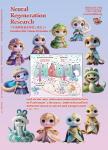Tissue-engineered rhesus monkey nerve grafts for the repair of long ulnar nerve defects:similar outcomes to autologous nerve grafts
Tissue-engineered rhesus monkey nerve grafts for the repair of long ulnar nerve defects:similar outcomes to autologous nerve grafts作者机构:Department of Sports Medicine and Rehabilitation Peking Universtiy Shenzhen Hospital Shenzhen Guangdong Province China Department of Microscopy First Affiliated Hospital of Sun Yat-sen University Guangzhou Guangdong Province China The Sixth People's Hospital of Shenzhen City Shenzhen Guangdong Province China
出 版 物:《Neural Regeneration Research》 (中国神经再生研究(英文版))
年 卷 期:2016年第11卷第11期
页 面:1845-1850页
核心收录:
学科分类:1002[医学-临床医学] 100210[医学-外科学(含:普外、骨外、泌尿外、胸心外、神外、整形、烧伤、野战外)] 10[医学]
基 金:supported by grants from the National Natural Science Foundation of China,No.30170962 the Major Subject of Key Technology of Guangzhou City of China,No.2002Z1-E0031 science and technology projects of Nanshan district,No.2014028
主 题:nerve regeneration peripheral nerve injury tissue engineering rhesus monkey ulnar nerve chemical extraction allogenic nerve autologous nerve transplantation Schwann cells neural regeneration
摘 要:Acellular nerve allografts can help preserve normal nerve structure and extracellular matrix composition. These allografts have low immunogenicity and are more readily available than autologous nerves for the repair of long-segment peripheral nerve defects. In this study, we repaired a 40-mm ulnar nerve defect in rhesus monkeys with tissue-engineered peripheral nerve, and compared the outcome with that of autograft. The graft was prepared using a chemical extract from adult rhesus monkeys and seeded with allogeneic Schwann cells. Pathomo- rphology, electromyogram and immunohistochemistry findings revealed the absence of palmar erosion or ulcers, and that the morphology and elasticity of the hypothenar eminence were normal 5 months postoperatively. There were no significant differences in the mean peak compound muscle action potential, the mean nerve conduction velocity, or the number of neurofilaments between the experimental and control groups. However, outcome was significantly better in the experimental group than in the blank group. These findings suggest that chemically extracted allogeneic nerve seeded with autologous Schwann cells can repair 40-mm ulnar nerve defects in the rhesus monkey. The outcomes are similar to those obtained with autologous nerve graft.



